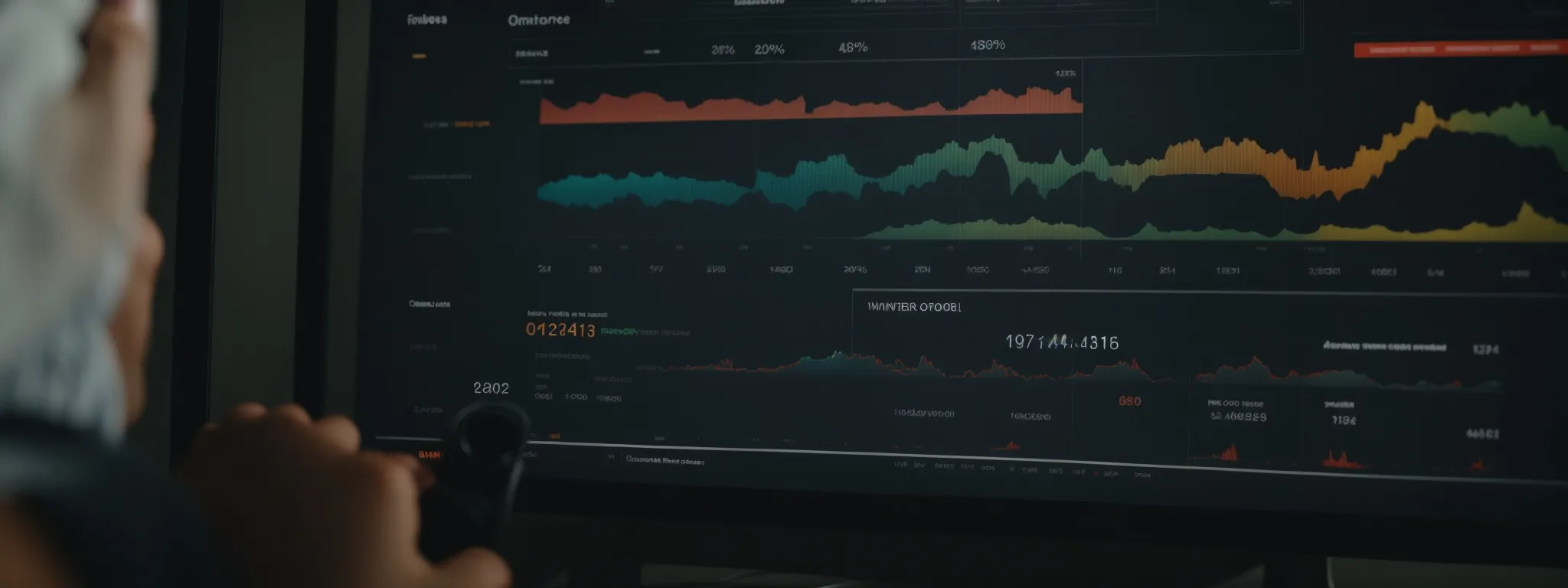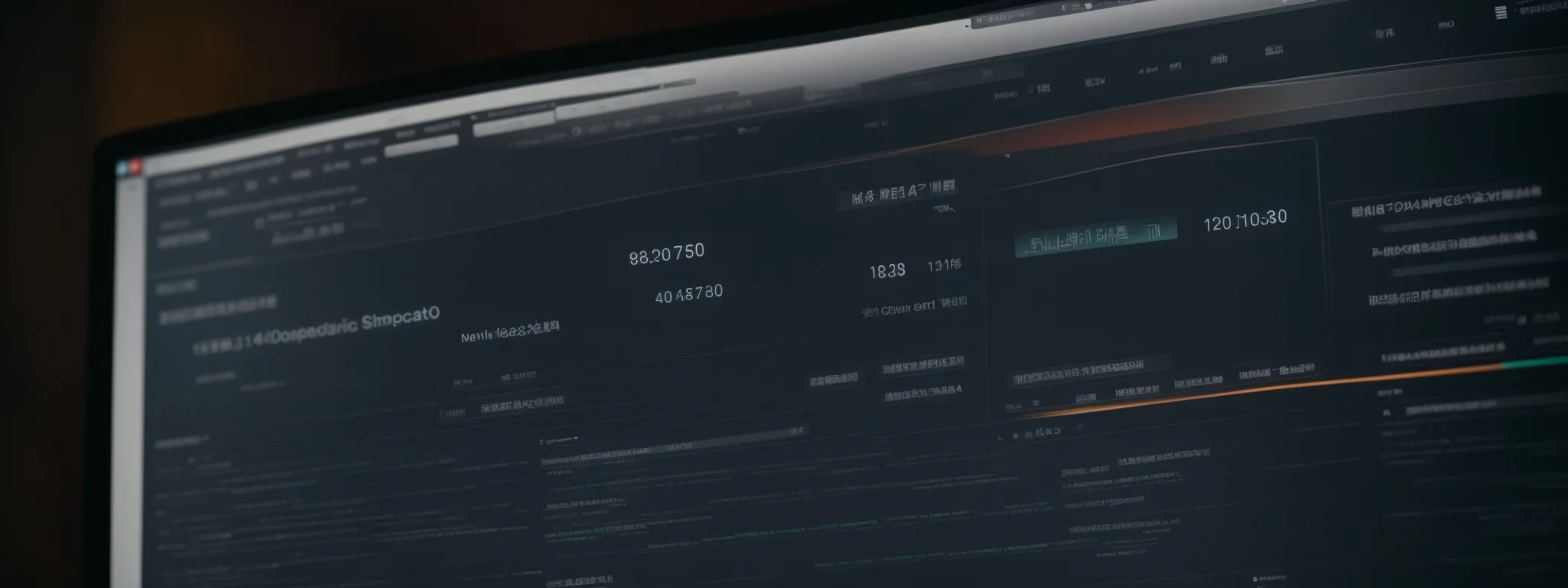Maximize SEO Impact with Optimized Meta Descriptions
Unlocking the Power of SEO With Well-Crafted Meta Descriptions The art of mastering SEO often hinges on the nuances, such as creating compelling meta descriptions—a critical yet […]
Unlocking the Power of SEO With Well-Crafted Meta Descriptions
The art of mastering SEO often hinges on the nuances, such as creating compelling meta descriptions—a critical yet frequently underestimated component of any SEO strategy.
As the concierge of your web page content, crafting a well-honed meta description not only captivates search engine users, but also serves as an invitation to explore the content within, ultimately influencing your search engine rankings.
With precisely chosen characters and targeted keywords, a meta description acts as a decisive factor in the click-through rates (CTR) of your page.
To empower your brand’s presence on search engine results pages (SERPs), an understanding of effective meta description optimization is indispensable.
Keep reading to delve into the strategic crafting of meta descriptions that resonate with readers and search engines alike.
Key Takeaways
- Meta Descriptions Play a Critical Role in Influencing Click-Through Rates and Enhancing Search Engine Relevance
- Strategic Use of Targeted Keywords and Persuasive Calls-to-Action in Meta Descriptions Is Crucial for Effective SEO
- LinkGraph Utilizes Search Atlas and Expert Content Strategies to Optimize Meta Tags and Improve Client Search Rankings
- Ongoing Analysis and Refinement of Meta Descriptions, Including a/B Testing, Are Essential for Maintaining SEO Effectiveness
- Updating Meta Descriptions to Align With Web Page Content Changes Is Vital for Sustaining Accuracy and Search Engine User Trust
Understanding the Role of Meta Descriptions in SEO

Within the intricate tapestry of search engine optimization, meta descriptions serve as a pivotal thread, intricately woven to impact user engagement.
A succinct and tantalizing meta description often acts as a decisive factor for a searcher contemplating which search result to explore.
Unveiling the nuances of this interplay, professionals must consider how these snippets can enhance click-through rates (CTRs) and ultimately, support the relevance of web pages in fulfilling a search query.
The complexity deepens when analyzing meta descriptions in relation to search engine results page (SERP) rankings, presenting a strategic aspect of SEO often underestimated by competitors.
Acknowledging this, LinkGraph leverages its SEO expertise to optimize meta descriptions, ensuring clients capture the searcher’s attention while simultaneously adhering to SEO best practices.
How Meta Descriptions Affect Click-Through Rates
Meta descriptions are a critical element influencing click-through rates (CTRs), serving as a bridge connecting the user’s intent with the content of a web page. Strategic crafting of these descriptions with targeted keywords and compelling calls to action directly correlates to the likelihood of a user selecting a specific search result.
LinkGraph understands that the potency of a meta description is not just in its ability to reflect page content, but also in capturing reader interest swiftly: the brief moment a searcher’s eyes scan the SERP is the window of opportunity for a meta description to convert curiosity into a visit:
- A compelling meta description encourages the user to click, boosting the page’s CTR and potential for improved search rankings.
- Anchor the meta description with relevance, promoting alignment with the searcher’s query and the page content, ensuring a satisfying user experience.
- Utilize persuasive language within the character limit to highlight the unique value proposition of the web page, making the search snippet stand out amidst competitors.
The Relationship Between Meta Descriptions and Search Relevance
The critical connection between meta descriptions and search relevance lies in the descriptions’ capacity to mirror the user’s search queries accurately. LinkGraph’s SEO services meticulously optimize these HTML elements to resonate with the searcher’s intent, thereby reinforcing the search engine’s assessment of the web page’s relevance.
In the realm of search engine results, a well-crafted meta description functions as an implicit ambassador for a brand, underscoring its relevance and authority. LinkGraph’s strategic content marketers employ Search Atlas to analyze and refine meta descriptions, aligning them with targeted keywords to amplify search relevance and foster enhanced brand awareness.
Meta Descriptions vs. SERP Rankings
The interplay between meta descriptions and search engine results page (SERP) rankings is a nuanced aspect of SEO strategy. While meta descriptions themselves do not directly influence rankings, their indirect effect comes through increased user engagement and CTR, which are significant factors that search engines may interpret as signals of a page’s value and relevancy to a user’s query.
Navigating these SEO subtleties, LinkGraph harnesses the power of Search Atlas tools to create meta descriptions capable of standing out in the crowded digital landscape. These curated snippets aim to draw in visitors and potentially galvanize SERP standings by demonstrating content that matches searchers’ needs:
- Strategic meta descriptions can lead to better user engagement, a metric that plays into SEO rankings indirectly.
- Search Atlas is employed to ensure meta descriptions are optimized with targeted keywords, reinforcing the content’s alignment with user searches.
- The synthesis of SEO best practices enhances the likelihood of improved SERP positioning for LinkGraph’s clients.
Crafting Impactful Meta Descriptions Step by Step

The strategic construction of meta descriptions stands as an indispensable component in the grand chessboard of SEO optimization.
These concise yet powerful HTML elements not only succinctly summarize page content but also hold the latent power to provoke interest and drive traffic.
Understanding that the seductive art of meta description creation is multidimensional, LinkGraph adopts a structured approach.
By identifying target keywords, crafting compelling content, weaving in a clear call-to-action, and adhering to snippet length best practices, professionals can distill the essence of a web page into an alluring invitation to readers.
Embarking on this meticulous process ensures that each description is a harmonious symphony of SEO essentials designed to elevate the user experience and enhance search engine visibility.
Step 1: Identify Your Target Keywords
The quest for handcrafting an influential meta description embarks with the pivotal task of pinpointing specific target keywords. LinkGraph employs comprehensive Backlink Analysis and Search Atlas’s advanced SEO tools to discern the search terms most relevant and beneficial for a client’s SEO strategy.
Precision in selecting these keywords is paramount, as they are the beacon that guides the searcher towards the content that addresses their query. Utilizing state-of-the-art techniques and accumulated data, LinkGraph ensures that chosen keywords are not only pertinent but also possess the potential to enhance the web page’s search ranking.
Step 2: Write Compelling Description Content
Upon the identification of target keywords, LinkGraph’s approach shifts to the creative phase where compelling content becomes the centerpiece of the meta description. The focus is to utilize the power of narrative and strategic language to encapsulate the essence of the web page, creating a descriptive segment that not only informs but also entices the searcher.
Integrating the target keywords seamlessly into a concise yet engaging narrative is where LinkGraph’s expert wordsmiths shine. They craft descriptions that not only satisfy the search engine’s algorithms but also resonate with the searchers, thereby bridging the gap between the user’s needs and the content presented by the client’s web page.
Step 3: Integrate a Clear Call-to-Action
The pathway to SEO success is punctuated by the strategic integration of a clear call-to-action (CTA) within a meta description. This directive element serves to prod the user with purpose, guiding them seamlessly from the search engine results page to the client’s web page.
An effective call-to-action acts as both a signal and an invitation: it indicates to the reader what action they should take next and entices them to take that step, thereby increasing the likelihood of a visit:
- Incorporate imperative language that motivates the reader, such as “Discover,” “Explore,” or “Learn more.”
- Align the CTA with the user’s search intent, making it relevant and irresistibly clickable.
- Ensure the CTA stands out, yet fits within the stringent character limits, perfecting its presence in the meta description.
Step 4: Maintain the Optimal Length for Snippets
The discipline of SEO requires a meticulous balance between expressiveness and brevity, particularly when composing meta descriptions. LinkGraph’s proficiency extends to understanding the significance of adhering to the character limit for these HTML tags, optimizing snippets to ensure they are long enough to inform yet concise enough to comply with search engines’ requirements.
Meta descriptions that surpass the ideal length are at risk of being truncated on the search engine results page, potentially losing critical information and call-to-action elements. LinkGraph’s SEO specialists use Search Atlas to methodically calibrate descriptions, crafting them to fit within the established bounds while instilling every word with purpose-driven intent to engage and compel targeted audiences.
Leveraging Keywords for Stronger Meta Descriptions

In a realm where search ranking can make or break the visibility of a webpage, leveraging targeted keywords within meta descriptions emerges as an art form critical to SEO mastery.
The effective use of relevant keywords is a strategic choice that serves as the linchpin for a compelling search snippet, magnifying the clarity and relevance of the web page for search engine users.
This introduction paves the way for an exploration into optimal keyword research practices, the judicious inclusion of keywords within meta tags, and the importance of avoiding keyword stuffing to maintain the integrity and allure of the meta description – ultimately unlocking the full potential of SEO for enhancing web presence.
The Importance of Keyword Research for Meta Tags
The foundation of constructing a meta description that resonates with both search engines and an intended audience begins with in-depth keyword research. By delving into the mosaic of search queries and understanding the language searchers employ, LinkGraph optimizes meta tags to ensure they echo the nuances and specificities the audience is seeking.
Meta tags enriched with well-researched keywords culminate in search snippets that capture and reflect the intent behind a user’s search query. LinkGraph’s precision in keyword research is crucial for tailoring meta descriptions that speak directly to the core of the searcher’s needs, contributing to enhanced visibility and engagement in the cluttered digital arena.
Best Practices for Including Keywords in Descriptions
Incorporating keywords into meta descriptions demands a judicious approach, one that respects the organic flow of language while ensuring optimization. LinkGraph’s bespoke strategy interweaves these keywords within the narrative fabric of the description, ensuring they read naturally and enhance the snippet’s relevance without detracting from its readability or messaging.
Striking a balance between keyword density and compelling content is the hallmark of LinkGraph’s proficiency; their SEO specialists focus on strategic placement near the beginning of the description tag to maximize visibility. This calculated positioning underscores the page’s relevance to both the search engine’s algorithms and the inquisitive eye of the searcher, thus skillfully boosting the chances of higher search rankings and user engagement.
Avoiding Keyword Stuffing in Meta Descriptions
Astute SEO specialists understand that keyword stuffing in meta descriptions detracts from the user experience and can incur penalties from search engines. LinkGraph exemplifies professional restraint, employing an SEO strategy where key terms are integrated judiciously to maintain an authentic, user-focused narrative that search engines favor.
In navigating the subtleties of SEO optimization, practitioners at LinkGraph prioritize relevance and readability over an excessive density of keywords, ensuring that meta descriptions remain informative and enticing. This approach upholds the integrity of a brand while promoting a positive and user-friendly interaction with search engine results.
The Dos and Don’ts of Meta Description Optimization

Navigating the delicate balance of meta description optimization is akin to unlocking a secret chamber within the realm of search engine optimization.
As businesses seek to elevate their digital presence, focusing on the finer details of their meta tags can lead to significant dividends.
Incorporating the right mix of relevant keywords and compelling calls to action (CTAs) is essential, yet one must be cautious not to neglect the singularity of each meta description.
The craft lies in achieving harmony between delivering vital information and captivating the audience with engaging content — both crucial elements that contribute to the efficacy of a brand’s SEO endeavors.
Dos: Incorporate Relevant Keywords and CTAs
Embedding relevant keywords strategically within a meta description is an imperative practice for businesses aiming to connect with their audience effectively. By placing targeted keywords in the meta description, LinkGraph ensures that its client’s content resonates with the search engine users’ intent, making the web page more relevant and increasing the likelihood of higher search ranking.
Integral to this process is incorporating a compelling call-to-action (CTA):
- CTAs crafted by LinkGraph guide users with explicit instructions that enhance the user experience and foster higher engagement.
- The use of action-oriented language within CTAs, tailored to the searcher’s journey, motivates a clear next step such as “Learn More”, “Get Started”, or “Contact Us”.
- These succinct, powerful directives embedded within the meta tags can significantly influence the user’s decision to click through to a client’s web page.
LinkGraph’s depth of expertise in SEO manifests in every aspect of their meta description optimization, aligning brand messaging with the needs and behaviors of search engine users. This synthesis of keyword relevance and inviting CTAs forms the cornerstone of content that not only appeals to the audience but also adheres to SEO best practices.
Don’ts: Overlook Meta Description Uniqueness
In the bustling marketplace of online content, overlooking the uniqueness of a meta description is akin to a cardinal sin in SEO. LinkGraph champions the principle that each meta description should be a distinct piece of craftsmanship, tailored specifically to reflect the singular essence of the page it represents, ensuring that search engine users are met with fresh, engaging search snippets that stand out from the competition.
By intertwining creativity with SEO rigor, LinkGraph’s approach to meta descriptions avoids the pitfall of redundancy, which can dampen user interest and diminish the perceived value of the page. The emphasis on individualized, attention-grabbing content fortifies a brand’s identity in the digital realm, reinforcing its authority and uniqueness in response to relevant search queries.
Balancing Information and Engaging Content in Meta Tags
In the delicate craft of meta description optimization, blending informative precision with engaging prose is non-negotiable. LinkGraph’s seasoned professionals wield this balance by infusing each meta tag with key information that aligns precisely with the search engine’s expectations, while simultaneously captivating the reader with a narrative that entices and holds attention.
The ensemble of SEO success hinges on meta tags that not only provide critical insights but also tell a compelling story. Through calculated wording and an acute understanding of the audience’s curiosity, LinkGraph creates meta descriptions that serve both as informative beacons and as intriguing hooks that lure visitors deeper into the website’s content ecosystem.
Tools to Maximize Your Meta Description Efficiency

In the relentless pursuit of search engine supremacy, a meticulously honed meta description stands as a fortress, its ramparts defending the relevance and appeal of the content it heralds.
Mastering this facet of SEO not only demands creativity and strategic insight but also the adept use of modern tools that enhance efficiency and precision.
From SEO plugins that offer streamlined creation to audit tools that scrutinize effectiveness, and character count utilities ensuring brevity meets substance—LinkGraph equips clients with a suite of sophisticated instruments.
These tools are designed to refine the meta description process, turning an arduous task into a wieldy endeavor, bolstering SEO efforts to yield formidable results in search engine rankings.
Utilizing SEO Plugins for Meta Description Creation
The implementation of SEO plugins stands as a testament to the evolution of meta description creation, simplifying what was once a complex endeavor. With tools like LinkGraph’s Search Atlas, businesses gain access to user-friendly interfaces that streamline the process of embedding target keywords and optimizing the character count in their meta descriptions.
These plugins not only expedite workflow but also offer a preview feature, allowing users to assess how the meta descriptions would display on search engine results pages:
- A preview tool can help editors visualize SERP appearance, ensuring that critical elements are not truncated.
- By simulating search result presentation, users can refine the meta description to perfection before publication.
Analyzing Meta Descriptions With SEO Audit Tools
SEO Audit tools play an essential role in scrutinizing the efficacy of meta descriptions, providing an in-depth analysis that can pinpoint strengths and highlight areas of improvement. LinkGraph harnesses such tools, deploying them to evaluate the alignment of meta descriptions with overall SEO strategies, ensuring that these critical HTML elements contribute effectively to search engine visibility and user engagement.
With the utilization of comprehensive SEO audit tools, including those incorporated within the Search Atlas suite, LinkGraph empowers clients to regularly monitor and refine their meta descriptions. These tools facilitate the identification of optimization opportunities that can lead to enhanced search rankings and a more compelling presentation of a brand’s narrative within the search engine results.
Keeping Up With Character Count Using Online Tools
Online tools dedicated to character count are indispensable in the realm of meta description optimization, where every character plays a strategic role. LinkGraph emphasizes the crucial use of these tools, enabling clients to sculpt meta descriptions with the precision required to meet search engine guidelines while maintaining the integrity of their message.
Engaging with these online resources, businesses can readily ensure their meta descriptions are concise, avoiding the pitfalls of truncation in search results. This meticulous attention to detail fosters clarity and impact as the description occupies its rightful place beneath the title tag, serving as a compelling invitation to potential visitors within the character confines mandated by search engines.
Analyzing and Refining Meta Descriptions Over Time

In the dynamic landscape of search engine optimization, the ongoing analysis and refinement of meta descriptions are vital for sustaining and bolstering the efficacy of SEO strategies.
As digital landscapes evolve and content becomes more sophisticated, meticulously tracking click-through rates offers invaluable insights into the effectiveness of meta tags.
Furthermore, employing A/B testing allows for the fine-tuning of meta descriptions, optimizing their impact on performance metrics.
Similarly, it is imperative to refresh and update descriptions in tandem with changes to page content to preserve the relevance and accuracy of the message relayed to users.
Together, these practices form the bedrock of an iterative process that elevates the optimization of meta descriptions to a powerful tool in the arsenal of SEO.
Tracking Click-Through Rates to Assess Effectiveness
In the arena of search engine optimization, tracking click-through rates (CTRs) functions as a quintessential barometer for gauging the effectiveness of meta descriptions. This metric reflects users’ responses to the narrative put forth in search snippets, essentially translating whether the crafted message aligns with their interests and search intent.
LinkGraph employs this analytical feedback loop to refine and enhance meta description strategies. It systematically improves upon the elements that drive user engagement, ensuring that client websites not only attract searchers but also compel them to act:
| Timeframe | CTR Before Optimization | CTR After Optimization | Impact on SEO |
|---|---|---|---|
| Q1 | 3.5% | 5.2% | Improved Visibility |
| Q2 | 4.0% | 6.1% | Increased Traffic |
| Q3 | 4.8% | 7.0% | Enhanced Engagement |
A/B Testing Meta Descriptions for Better Performance
Embracing A/B testing emerges as a sophisticated technique that LinkGraph utilizes to boost the performance of meta descriptions. This method involves experimenting with different variations of a meta description for the same web page, systematically gathering data on which version drives superior click-through rates and user engagement.
The insights gleaned from A/B tests empower LinkGraph’s SEO experts to discern the language and messaging that resonate most effectively with their client’s audience. Fine-tuning meta descriptions based on A/B testing results is a calculated move that catalyzes enhanced search engine rankings and a more robust digital presence.
Updating Descriptions in Response to Content Changes
Adaptability in SEO is imperative, especially when it comes to meta descriptions that must parallel the dynamism of web page content. When updates occur, whether introducing new products or reflecting the latest market trends, LinkGraph advocates for the concurrent modification of meta descriptions to sustain the accuracy and relevance that search engine users expect.
Maintaining the currency of meta descriptions in alignment with page content is not merely an SEO task—it’s a critical step in fostering user trust. As such, LinkGraph provides an ongoing service, ensuring that transformations in the client’s offerings or content strategies are mirrored in their meta tags to preserve the consistency crucial for securing a competitive edge in search rankings:
| Content Update | Description Pre-Update | Description Post-Update | SEO Engagement Change |
|---|---|---|---|
| New Product Launch | Explore our latest gadgets. | Discover the newest innovation in smart tech. | Increase in product-related traf |
Frequently Asked Questions
Why are meta descriptions important for SEO optimization?
Meta descriptions play a pivotal role in SEO optimization because they offer a concise summary of web page content, enticing search engine users to click through to a site. Reflective of a brand’s voice within a character limit, these HTML attributes significantly influence click-through rates (CTR) and can enhance the visibility of a search snippet on a search engine results page (SERP), serving as an imperative element in a user’s decision to engage with the content presented.
How can I create impactful meta descriptions for my web pages?
Creating impactful meta descriptions for web pages involves a blend of brevity and persuasiveness, summarizing the page content while embedding targeted keywords to meet the user’s search intent. Professionals often employ tools like LinkGraph’s Search Atlas, which features a description generator to optimize meta tags efficiently, ensuring they fit within the character limit and compellingly represent the brand to enhance click-through rates from SERPs.
How do targeted keywords enhance the effectiveness of meta descriptions?
Targeted keywords in meta descriptions work like a beacon, signaling to search engines the relevance of a web page to a user’s search query, thereby increasing the potential for higher search ranking. Additionally, they serve as a compelling preview that can enhance click-through rates (CTR) by resonating with the searcher’s intent, effectively bridging the gap between user and content.
What are some best practices and common pitfalls to avoid when optimizing meta descriptions?
Best practices for optimizing meta descriptions include incorporating targeted keywords to reflect the user’s search query and crafting a compelling summary that incentivizes the searcher to click through, all while adhering to the recommended character limit to avoid truncation in search engine results. Common pitfalls include neglecting to provide a unique meta description for each page, overly duplicating content which can appear repetitive to search engines and users alike, and failing to align the description with the actual page content, leading to a poor user experience and potentially diminished search rankings.
Are there any tools available to help analyze and improve meta descriptions for better search ranking?
Certainly, LinkGraph’s Search Atlas software suite offers a robust SEO toolset, including a meta description generator that analyzes and enhances meta descriptions to improve a site’s search ranking. This tool not just evaluates the effectiveness of meta tags but also suggests improvements to optimize them for user engagement and click-through rates.
Conclusion
In summary, crafting well-thought-out meta descriptions is a crucial step in harnessing the full potential of SEO.
These brief but powerful HTML elements serve not only as summaries of web page content but also as enticing invitations that can significantly increase click-through rates.
By strategically incorporating targeted keywords, delivering compelling content, and integrating clear calls to action, while also maintaining optimal snippet length, professionals can elevate both the user experience and the visibility of web pages in search engine results.
Regular analysis and refinement of meta descriptions, including A/B testing and updates aligned with content changes, are essential for maintaining relevance and effectiveness.
Utilizing SEO tools and plugins effectively can streamline this process, ensuring that meta descriptions contribute to a robust and dynamic online presence.















































































